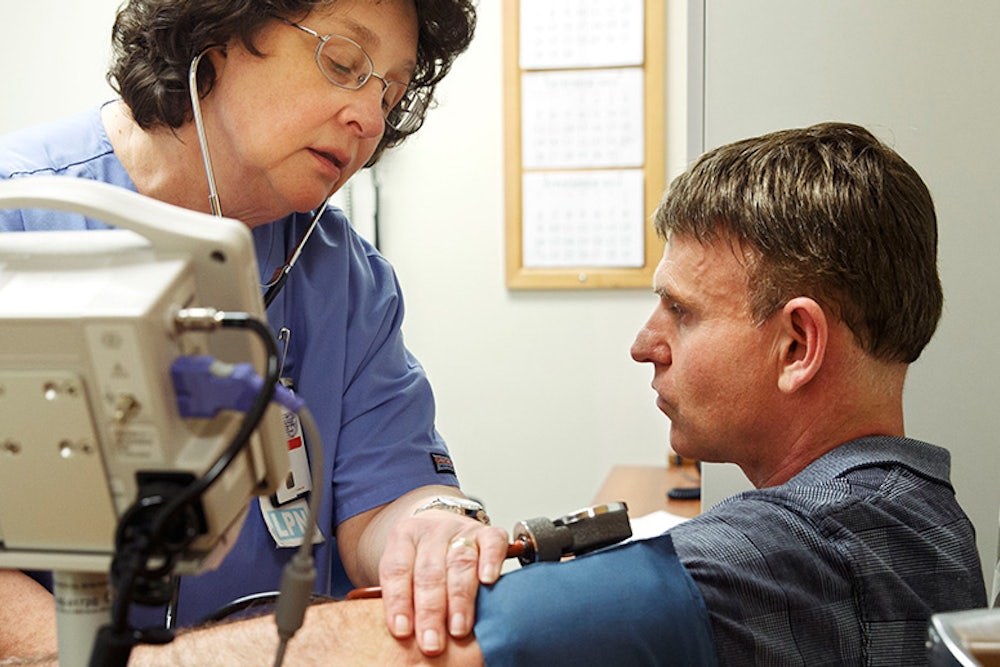That ruckus you didn’t hear over the weekend was the sound of Obamacare online marketplaces not failing to work. Healthcare.gov went fully operational in the wee hours of early Saturday morning, without technical difficulties, and most of the state marketplaces did too—although California and Washington state had some glitches. By the time Saturday was over, Health and Human Services Secretary Sylvia Burwell reported, more than 1,000,000 people had shopped for coverage on healthcare.gov and more than 100,000 people had successfully completed applications to buy insurance.
That’s a nearly 1.7 million percent increase over last year’s day one performance, when just six people were able to complete an application on the non-functional website. Yay!
Of course, a merely functioning website shouldn’t be reason to celebrate. It’s what is supposed to happen—and what should have happened last year, had the Obama Administration and several states handled their online launches properly. Going forward, the real test for the Affordable Care Act is whether it provides people with good options for affordable, comprehensive coverage. And if you glanced at the headlines over the weekend, you heard some very different versions of how the program is faring. There were reports that Obamacare premiums on the marketplaces were falling, rising slowly, and rising quickly relative to last year's rates.
Which reports were right? All of them, actually.
It all depends on what question you are really asking—and what, exactly, you want to know. The overall trend is very clear. Analyses from Avalere, the Kaiser Family Foundation, and PricewaterhouseCoopers all found that, for the market as a whole, premiums have risen very modestly in the last year. As Patrick Egan notes at the Washington Post’s Monkey Cage, that means they care closely tracking the premiums for employer-sponsored care.

Source: The Monkey Cage
The price of the second-cheapest silver plans, which the law treats as a benchmark, also went up very slowly. Health insurance premiums go up almost every year, just because of inflation and ever-improving technology, so modest hikes like these are good news. Even better news is the fact that, in some markets, the price of the benchmark silver plan has actually declined—something that almost never happens health care. As Larry Levitt, senior vice president of the Kaiser Family Foundation, observed earlier this year when such changes first became apparent, that’s like “defying the laws of physics.”
So what’s not to like? Well, these trends and averages mask tons of variation. New insurers are jumping into the marketplaces and in many cases they are offering newer, cheaper options. In addition, some insurers who last year asked for high premiums have decided to lower their prices. The common goal of both is to attract more customers and, all else equal, it’s a sign that the markets are healthy. But some insurers are raising prices, because they underestimated costs last year. Here's what the prices look like, across the country:

Source: Kaiser Family Foundation
In addition, the law provides tax credits, which operate as upfront discounts, that reduce the price of insurance for most people with incomes of less than 400 percent of the poverty line, or about $95,000 a year for a family of four. The size of those tax credits depends on the price of that benchmark, second-cheapest silver plan. In communities where the price has gone down, the tax credit will be worth less than it was last year.
Put it all together, and you have a situation where quite a few people will discover that prices in their community are coming down overall, but the price they pay for the same policy is going up.
These people will all have the option to shop around for cheaper options, an option they didn’t have before. That’s the reason the Administration is encouraging all people who obtained policies through healthcare.gov to shop around, to see how prices have changed, and weigh whether they want to switch. But switching plans could mean switching provider networks—something that health policy experts say generally means little, but to many actual people with doctors they like means a lot. One unanswered question is whether people switching from more to less expensive silver plans are, on the whole, gaining or losing access to providers (and, over the long run, whether state and federal officials need to act more aggressively to guarantee "network adequacy").
Of course, doctor networks changed in the days before Obamacare—it's inevitable, unless you have single-pyaer—and premiums went up all the time, sometimes by much larger increments than even the largest increases people are seeing on the marketplaces today. Insurance companies were also known to pull some pretty shady tricks, like cancelling policies for “newly discovered” pre-existing conditions, that the Affordable Care Act ended once and for all.
How people feel about this year’s changes will depend a great deal on how well they remember what happened before.
Update: I originally wrote that the 100,000 completed applications on day one represented a 100,000 percent increase, which was incorrect both factually and mathematically. Yes, it's been a long day.
